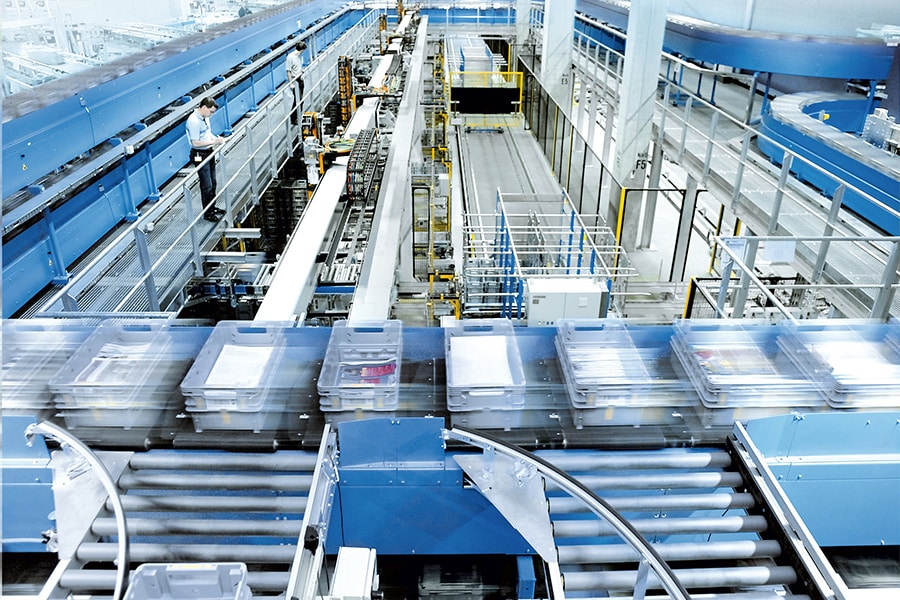
Three tips for logistics organizations to deal with a shortage of qualified professionals
By Albert van Roekel, Director Solutions Consultancy at Descartes
The logistics industry has long faced a shortage of qualified professionals. 93% of the transportation professionals surveyed in our Global Transportation Management Benchmark Survey say they experience capacity problems. From other recent Descartes research to labor shortages in logistics and supply chain reveals that 61% of the transportation professionals surveyed said transportation operations are most pressured by staff shortages. This includes employees in executive roles such as drivers and warehouse workers as well as knowledge workers responsible for planning and transportation management. In this article, I offer three tips for logistics organizations to alleviate staffing shortages.
- Evaluate your logistics processes and design them more efficiently
A staffing shortage means you need to continually evaluate whether your internal processes are smartly designed so that the people you have on board are spending their time doing the right things. Can you make process changes to make them work smarter? Take the process of order picking, for example. By changing this from a static, once-a-day process to a continuous, dynamic process, your operational efficiency can improve significantly. One of our customers is a supermarket that introduced multiple order picking moments per day for grocery delivery: instead of one order picking moment at the end of the day and all routes are known - they now have a dynamic process where they start order picking earlier while new orders are still coming in and the route planning is adjusted in real time. Because the order picking process now starts already during the day, they can better utilize the working time of their staff, reducing their reliance on shifts that worked at night and also previously had to process an excessive amount of orders, resulting in overtime. This process adjustment made it easier to find and retain staff.
- Deploy algorithms for strategic planning
Many companies still plan by hand, using piles of paper and simple tools like Google Maps to draw out logical approach routes. This is time-consuming and inefficient. And the slightest last-minute change means a planner has to work extra long hours or get up early to adjust the scheduling of drivers and cars. Modern scheduling software can use algorithms to automatically calculate the most efficient routes, taking into account various factors such as traffic conditions, delivery times and vehicle availability and sizes. The planner can then focus on tasks that add more value. Consider analyzing transportation and delivery times to discover patterns that in turn provide insights for adjusting automatic schedules. For example, if you notice that drivers need more time on average to load and unload goods in the inner city, then it is a good idea to take this into account and change settings in the scheduling software.
- Take advantage of real-time tracking and dynamic route adjustments on the go
The more accurate a time slot at which a delivery driver arrives at the door, the more satisfied a customer is. Customers also expect more and more precision in their delivery times. In other words, a large time window of, say, twelve hours is no longer acceptable. Yet many companies still do not have sufficient control over their delivery process, preventing them from promising accurate time slots to their customers. By using real-time tracking and dynamic route adjustments, deliveries can be planned and executed more accurately. This not only increases customer satisfaction, but also reduces the number of failed deliveries and rescheduled deliveries, making it easier to meet KPIs. Indeed, if a delivery does take just a little longer than expected, the solution automatically calculates the new time slot for the next delivery. Or it automatically adjusts the route so that all packages or pallets can be delivered on the same day. For example, by taking customer opening hours into account or by delaying a delivery for a customer for whom a delivery is less urgent. This saves a lot of mileage and fuel. Should it still not be possible to deliver all deliveries in one day, the solution can send an alert so that the customer is informed of the delayed delivery automatically or via customer service. In the context of customer satisfaction, it makes more sense to proactively inform a customer than to keep them waiting unnecessarily and offer excuses.
By scrutinizing internal processes and using smart technology, logistics companies can work more efficiently to better meet the challenges of a tight labor market. Download our report and read more tips on how to cope with staff shortages as a logistics provider.



